#stage plays
Text

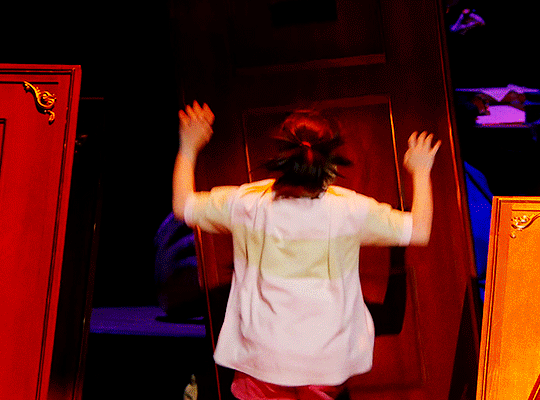
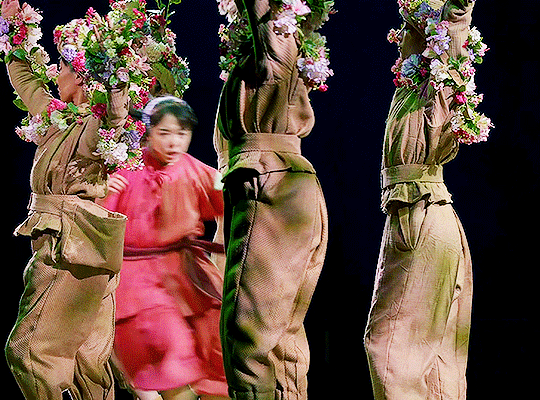



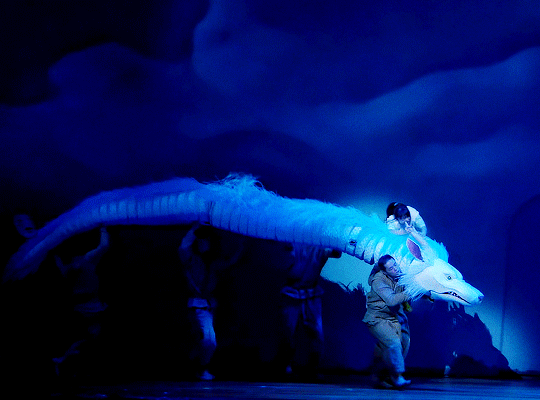


MONE KAMISHIRAISHI as Chihiro
SPIRITED AWAY : LIVE ON STAGE (2022) dir. John Caird

#spirited away#sen to chihiro no kamikakushi#ghibliedit#ghibligifs#ghiblicentral#dailyghibli#ghiblisdaily#jdramaedit#asiancentral#chewieblog#userbbelcher#stage plays#theatre#my edit#long post#im not sure how to tag this really#it's a play
822 notes
·
View notes
Text
If the Scottish Play's 3 witches were 90s teens.

#The Scottish Play#Shakespeare#Shakespearean plays#William Shakespeare#weird sisters#Macbeth#yeah I'm a theatre geek but not THAT superstitious#*throws salt over shoulder*#theater#theatre#plays#stage#stage plays
36 notes
·
View notes
Text


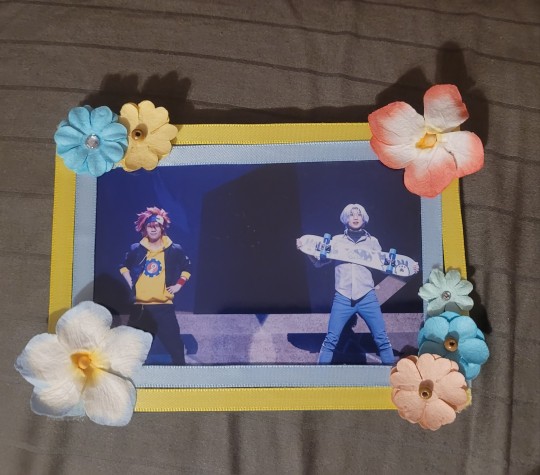
Top loader decorating. I think they turned out good for my first time!
#saki posts#my post#top loaders#decoration#photocard#bromides#stage plays#hypmic#hypnosis mic#sasara nurude#mackey#sk8#sk8 the infinity#sk8 the stage#langa hasegawa#reki kyan#renga
26 notes
·
View notes
Text
Today's LGBT+ Character is;

Tilly Evans |Tillius the Paladin from She Kills Monsters-Lesbian
Requested by anon
Status: Deceased
#Tilly Evans#Tilius the Paladin#She Kills Monsters#lesbian#lgbt#character of the day#wlw#plays#stage plays#queer theatre#fandoms i'm not in#requested#LGBTQueue#deceased
12 notes
·
View notes
Text

#kanna hashimoto#hashimoto kanna#橋本環奈#jactress#spirited away#anime#stage plays#plays#theater#theatre
7 notes
·
View notes
Text
You kin Shigeo Kageyama?
Were you punished/discouraged from expressing your emotions? You feel like your feelings are a burden, don't you?
*sniff sniff* you probably have social anxiety
You actually crave friends but due to suppressing your emotions you've grown to lack social skills.
Your forgiving nature comes from you having to be the bigger person at all times.
You have a very low opinion of yourself and struggle with imposter syndrome. You latch on to anyone who shows you basic kindness for reassurance. You crave it and have moments of egotism
#kinnie#mob psycho 100#mob psycho shigeo#mob psycho anime#shigeo kageyama#mp100 shigeo#mob shigeo#anime and manga#manga#anime#stage plays#video games#games#one#japan#shounen manga#shounen jump#shounen#comedy#slice of life#supernatrual#mp100#mob psycho#ura sunday#kinny#kincallouts#kintype#fictotype#flicktype#synpath
13 notes
·
View notes
Text
January, 2024: Bertolt Brecht's The Threepenny Opera enters public domain.
Me: Grabs my computer and resumes work on the girl power/sisterhood/women-supporting-women play inspired by it that I've put on hold since 2019.
#the threepenny opera#bertolt brecht#stage plays#musical theatre#musicals#classic musicals#playwright#writers on tumblr
11 notes
·
View notes
Text

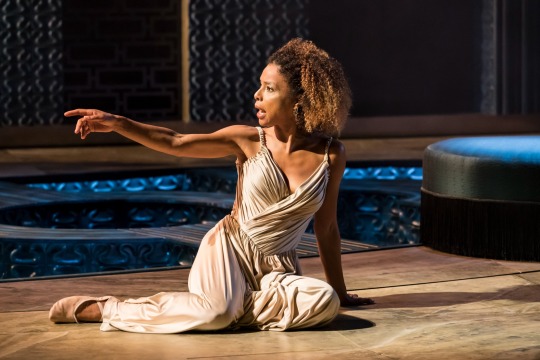


Sophie Okonedo and Ralph Fiennes in National Theatre’s Antony and Cleopatra
Photos by Johan Persson and Matt Humphrey (x)
#Sophie Okonedo#Ralph Fiennes#Antony and Cleopatra#Shakespeare#Antony#Cleopatra#National Theatre#National Theatre Live#NT at Home#Johan Persson#Matt Humphrey#behind the scenes#bts#stage#stage plays#play#photography
268 notes
·
View notes
Text
What if we made a theatre of cruelty style piece about succession.
The audience are all just Logan’s children and it’s an old man screaming at you for an hour straight and then going on about whatever tf waystar royco do but it’s all in metaphor that you only understand about 3% of
5 notes
·
View notes
Text
We watched the Spy Classroom stage play
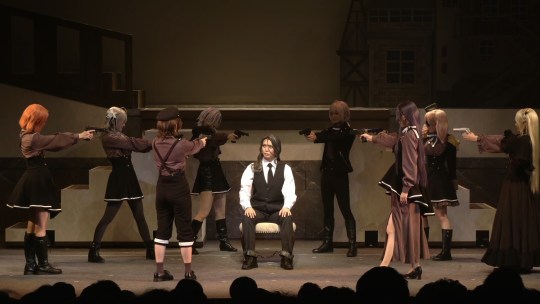
AKA "Spy Room" officially, or "Spy Kyoushitsu" in Japanese.
We were really hyped for this one both because we're big fans of Spy Classroom, and because we knew a whole bunch of the actresses from Assault Lily plays (Asakura Fuyuna/Grete as Moroi Saho, Hoshimori Sana/Monika as Seren and Shenlin, Ishii Haruna/Thea as Nagisa and Kiito, Kitazawa Saki/Annette as Imari, Sakura Ui/Erna as Raimu.)
And it delivered! In fact it probably ties with the Bocchi the Rock stage play as the best play based on an anime (or on something that got an anime, anyway... I'm not gonna count Assault Lily in that though) that we've watched so far.

The play adapted the entire first novel (corresponding to episodes 1-3 of the anime) with some minor abridgements.
The weakest parts of it had little to do with the performers themselves. One big issue was that the stream audio, specifically the actors' mic balance, was bad. We could hear characters that had powerful voices like Klaus and ones that yell a lot like Lily, but some others like Grete and Sara were completely inaudible as often as not.
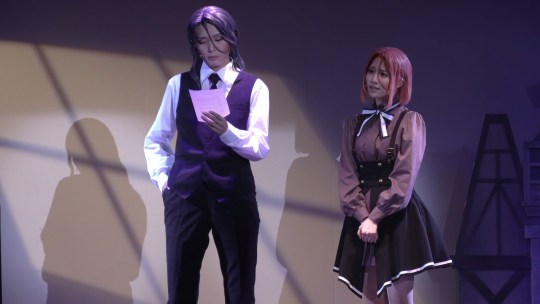
Another thing I didn't like is that Renjo Makoto used an extremely deep voice for Klaus and it was clearly at the limit of her vocal range, making it sound kind of monotone. I assume the director or someone told her to do this, probably to mimic Klaus's voice in the anime. If I were in charge, I would've leaned into Klaus being androgynous and had the actress use her natural voice.
But that's enough about the bad. Let me talk about the good.

Yokoyama Yui's Lily was excellent, which was surprising when she had relatively little experience in stage acting compared to the other performers (not none, just little.) Takaoka Kaoru's Sara was also charming, and I particularly liked the new scenes where the two of them talked with each other—they gave Lily an "encouraging big sister" vibe she doesn't get to show that often in the novels.
All the Assault Lily veterans were excellent, of course, though if I were to pick one it'd be Kitazawa's Annette and her cute antics even in scenes where she wasn't the focus.
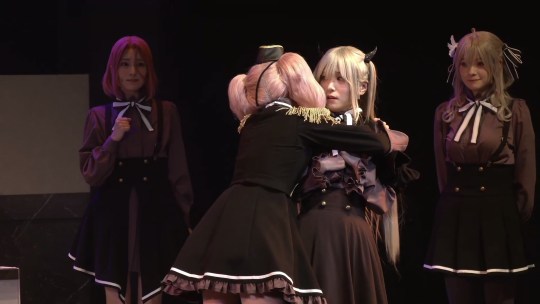
I complained about Renjo Makoto's voice for Klaus, but that aside, her acting was great too.
And I have to give a honorable mention to Takada Jun's Guido, who left quite an impression on me despite only appearing in the final act and not being a cute girl. He should have been tapped for Majima in the LycoReco play instead of that wannabe Joker guy.

Last but not least, the effects and video projection were great, and even the extras were remarkably memorable, particularly the ones that dropped in during Erna's attempts to defeat Klaus on their date out in town.
All in all, it was an excellent and very enjoyable play that was vastly superior to the anime's take on the same novel. The anime got a lot better later on, but the disappointment of that first arc felt like getting stabbed in the back.

You've still got time to catch the final two streams on Confetti (hopefully they fixed the audio, we watched the very first performance that got streamed.) Don't dawdle though, the archives will be available for less than a week from the moment I type this.
3 notes
·
View notes
Text

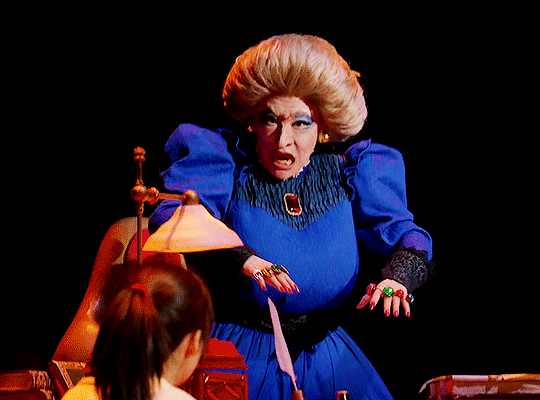


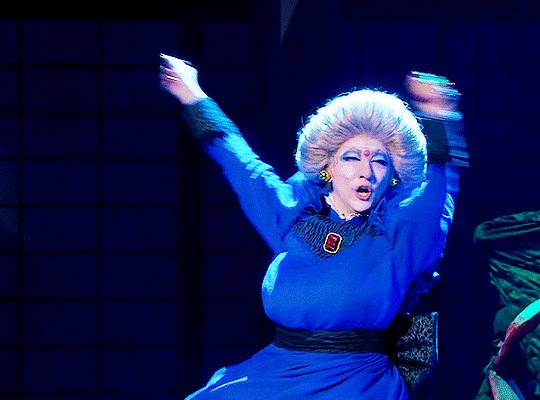

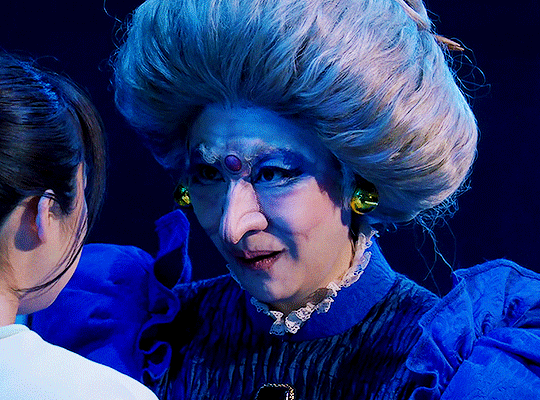
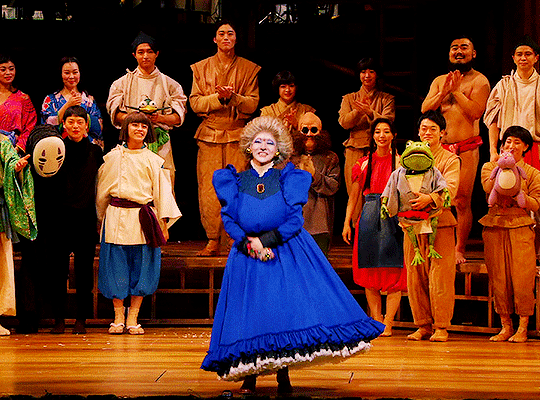
ROMI PARK as Yubaba/Zeniba
SPIRITED AWAY: LIVE ON STAGE (2022) dir. John Caird

#spirited away#sen to chihiro no kamikakushi#ghibliedit#ghibligifs#ghiblicentral#dailyghibli#ghiblisdaily#jdramaedit#asiancentral#chewieblog#userbbelcher#stage plays#theatre#my edit#long post#i love romi park so much!#she is unrecognizable here but when you hear her voice#oh yeah#trademark voice!
396 notes
·
View notes
Text
I get disheartened, frustrated, and irritated, so I watch some silly Shakespeare.
Sir Toby tricking Sir Andrew Aguecheek and Cesario (Viola) into a duel for his own amusement makes me happy.
#Tim McMullan#Twelfth Night#Shakespeare#William Shakespeare#Shakespeare's comedies#National Theatre#2017#Tamara Lawrence#Daniel Rigby#plays#theatre#theater#stage plays#Sir Toby Belch#Sir Andrew Aguecheek#Viola/Cesario
10 notes
·
View notes
Text
Welcome to Doki Doki News, your source for updates in the world of anime, gaming, and otakudom, for the week of December 31st! Check out the latest episode in our player below!
Will you be watching the new Spice & Wolf? Are you excited about the new mysterious MSI hand-held? Thanks for listening, and please subscribe to us on Apple, Spotify, or SoundCloud, where you can also find breaking news episodes!
Attributions:
Spice & Wolf [ANN]
Spirited Away: Live on Stage [CBR]
MSI [Neowin]
#Anime#Stage Plays#Anime News#Video Games#Spice & Wolf#Spirited Away: Live on Stage#Sen to Chihiro no Kamikakushi: Butai#MSI#CES 2024#Doki Doki News#Anime Article#Anime Blog#Articles#Stage Play Articles#Stage Play News#Video Game Article#Video Game News#Christian Anime#Christian Stage Plays#Christian Video Games#Author: Joshua See#SoundCloud
3 notes
·
View notes
Photo
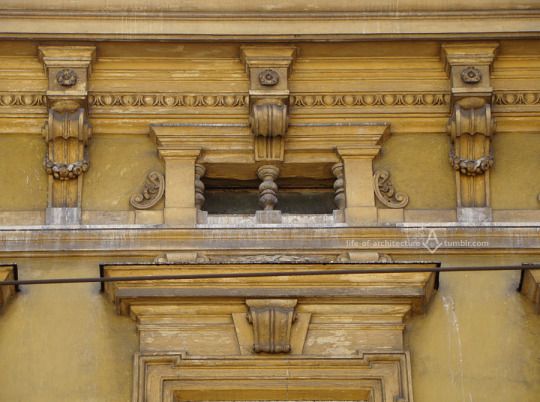

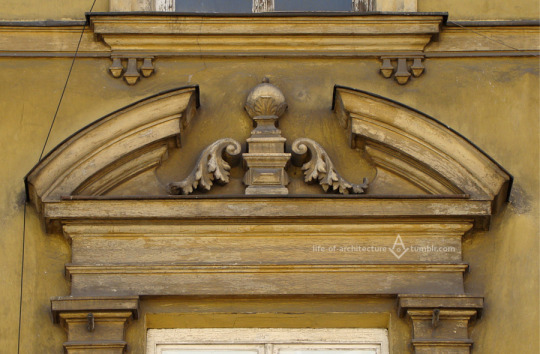
Kraków
ul. Starowiślna 21
kamienica z lat 1887-1888
foto z 28 sierpnia 2016
Dziewięcioosiowa fasada kamienicy jest jedną z najszerszych na tej ulicy, a mimo to wciąż kryje rzeczywisty rozmiar budynku, w ciągu półtora stulecia powiększanego stopniowo, aż zajął dawne podwórze i połączył z przeciwległą pierzeją, ostateczną głębokością ponad trzykroć przekraczając szerokość frontu. Główna część rozbudowy powstała kilka lat przed I Wojną Światową na potrzeby świeżo wtedy założonego Teatru Nowości, ledwo dwie dekady po ukończeniu pierwotnego budynku. Tak o niej pisał popularny krakowski dziennik, opatrując wiadomość rysunkiem nowej budowli projektu Maurycego Tellmana:
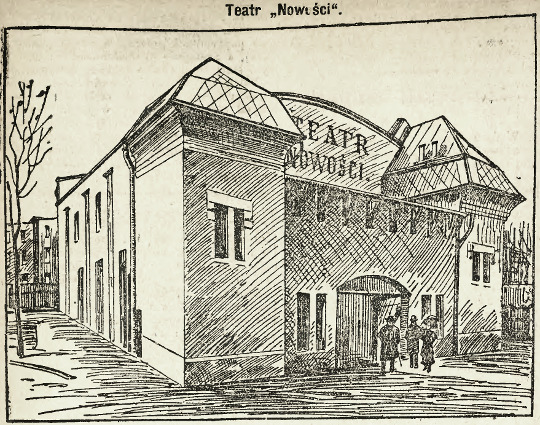
Zdawna już dawał odczuwać się w Krakowie brak lokalu rozrywkowego, w którym przeciętnie zamożna jednostka mogłaby niewielkim kosztem spędzić kilka godzin na bezfrasobliwej zabawie. Toteż kiedy z wiosną br. dyrektorzy [Stanisław] Poleński i [Tadeusz] Pilarski otworzyli prowizoryczny teatr rozmaitości, pomysł ten znalazł ogólne uznanie (...). Wobec tak pomyślnych wyników przystąpiło przedsiębiorstwo do budowy własnego budynku i myśl tę wykonało z amerykańską nieledwie szybkością. (...) na czele budowy stanęli bud. pp. Kramarski i Majer; Tow. to zdołało w przeciągu 2 miesięcy olbrzymi wystawić budynek w większej części żelazno-betonowy wraz z salą teatralną, balkonami, galeryą, sceną, garderobami i bufetami (...). Gmach teatralny mieści się w ogrodzie jednej z kamienic przy ul. Starowiślnej (...). Dach ogniotrwały, systemu Stephana, wznosi się kulisto nad budynkiem, dając gwarancyę wybornej akustyki. (...) Widownia jest tak olbrzymia, iż będzie to największa sala w Krakowie. Pomieści około 1000 miejsc. Utrzymana w tonie szafirowym, z złotymi fryzami i ściennemi malowidłami, okolona została wieńcem wspaniałych lóż parterowych oraz piątrowym balkonem w kształcie półkola, mieszczącym nadto małą galeryjkę nawprost sceny. Wszystkie miejsca bez wyjątku są siedzące, z zastosowaniem wygodnych, pluszowych foteli oraz krzeseł parkietowych z przyrządem samoopadających siedzeń. Scena wygodna, a przedewszystkiem przestrzenna i wysoka, oddzielona została od widowni artystycznem wgłębieniu orkiestrowem, przeznaczonem dla muzyki. Scenę otaczają niemniej wygodne, liczne garderoby aktorskie. Bufety i palarnia znajdować się będą w przednim budynku, odosobnione od głównego gmachu teatralnego. W gmachu teatralnym zaprowadzono ogrzewanie centralne oraz oświetlenie i wentylacze elektryczne. Oświetlenie będzie bogate i urządzone z przepychem, gdyż wszystkie lampy mieścić się będą w artystycznych żardinierach.
Ilustrowany Kuryer Codzienny, 29 listopada 1911
Styl opisu budzi niejakie podejrzenie, że jego autor spędził więcej czasu we wspomnianym bufecie niż we właściwym budynku, o ile w ogóle go odwiedził i nie ograniczył się do spisania wizji roztoczonej mu przez któregoś z dyrektorów, bowiem realna liczba miejsc była bliższa połowie tego zapowiadanego tysiąca, a i poza widownią miejsca było skąpo. Mimo to, inauguracja była wielkim sukcesem. Pierwsze na nową scenę weszły ówczesne gwiazdy operetki i kabaretu, m.in. szkockie siostry Gilby i polska aktorka Józefa Borowska. Dla tej ostatniej występ okazał się pechowy:
W nocy z soboty na niedzielę włamali się złodzieje do gaderoby teatru „Nowości” gdzie skradli parę zegarków, kolczyki i korale, należące do pani Józefy Borowskiej, oraz kilkanaście kostyumów. Ogólna strata wynosi 2.600 koron. Zawiadomiona policya aresztowała sprawców w osobach 18-letniego Jana Szumca i 19-letniego Stanisława Kani. Złodzieje ci dokonali w ostatnich czasach kilku śmiałych kradzieży z włamaniem, między niemi do dwóch sklepów przy ulicy Wielopole.
Ilustrowany Kuryer Codzienny, 19 grudnia 1911
Nie minęły dwa lata, gdy krakowska prasa doniosła, że:
Teatr Nowości został gruntownie przerobiony na pierwszorzędny teatr kinematograficzny. Dyrekcya urządziła nowe loże, fotele rezerwowe i tanie miejsca dla dzieci. Wogóle będzie to najtańszy kinematograf w Krakowie, obliczony na wielką skalę.
Nowa Reforma, 3 kwietnia 1913
Teatr wrócił na Starowiślną w 1918 r. by znów ustąpić kinu po czterech zaledwie latach. Niektórzy odwiedzali je nie tylko dla filmów:
Ubiegłej nocy włamali się nieznani sprawcy do bufetu kina „Nowości”, skąd skradli większą ilość czekolady i cukierków, wartości 150 zł.
Ilustrowany Kuryer Codzienny, 17 lipca 1929
Na początku lat 30 krótko przemianowane na Światowida, a potem znane jako Adria, w ostatnich swoich dniach dysponowało widownią na 1200 miejsc. Kino odeszło na dobre wraz z ostatnią wojną, ale teatr na Starowiślnej znów działa, dziś już pod nazwą Teatru Kameralnego, i dzieląc siedzibę z Teatrem Współczesnym. Na jego scenie wiele się działo w ciągu tych lat.
1958, Jaki piękny dzień! Michela de Ghelderode. Foto © Adam Drozdowski

1960, Rosmersholm Henryka Ibsena. Foto © Wojciech Plewiński

1962, Postępowiec Sławomira Mrożka. Foto © Wojciech Plewiński
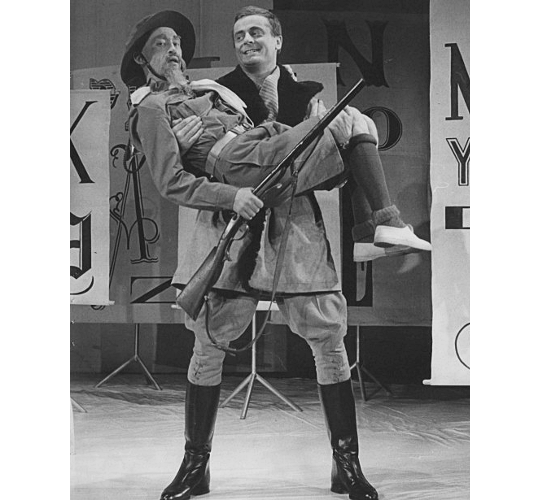
1962, Koriolan Williama Szekspira. Foto © Wojciech Plewiński

1963, Kaligula Alberta Camusa. Foto © Wojciech Plewiński

1965, Lokatorzy Eugene'a Ionesco. Foto © Wojciech Plewiński

Projekt scenografii Lidii Minticz i Jerzego Skarżyńskiego do inscenizacji Tanga Stanisława Mrożka w 1965 r.
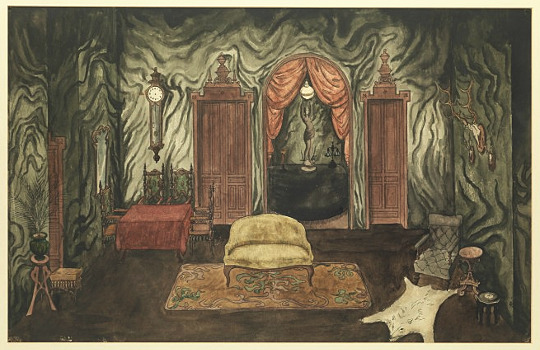
1966, Sie kochamy Murraya Schisgala. Foto © Wojciech Plewiński
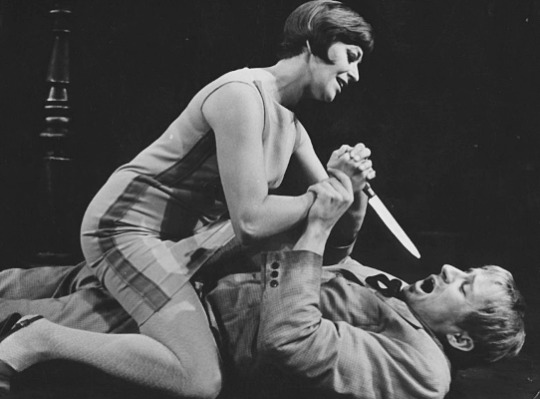
1967, Trojanki Eurypidesa. Foto © Wojciech Plewiński
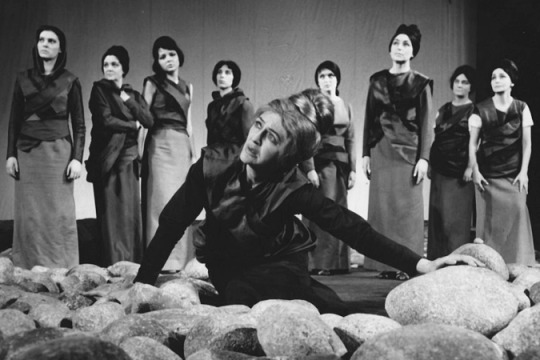
1968, Czarna komedia Petera Shaffera. Foto © Wojciech Plewiński
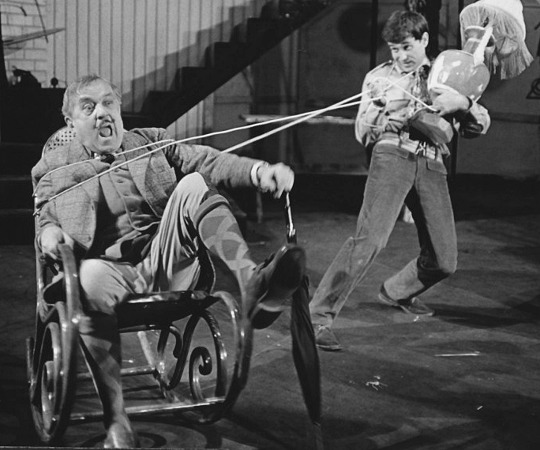
Projekt scenografii Urszuli Gogulskiej do inscenizacji Trzech sióstr Antoniego Czechowa w 1969 r.
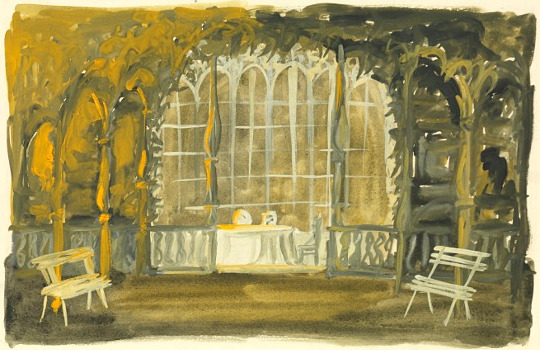
1970, Wszystko w ogrodzie Edwarda Albee'ego. Foto © Wojciech Plewiński

1975, Wiśniowy sad Antoniego Czechowa. Foto © Wojciech Plewiński

1977, Opera za trzy grosze Bertolda Brechta. Foto © Zbigniew Łagocki
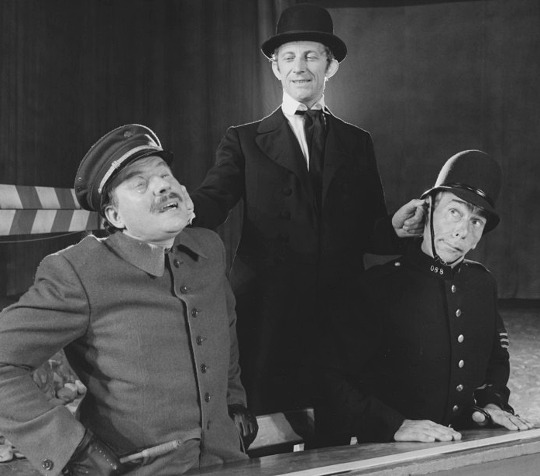
1989, Bądźmy poważni na serio Oscara Wilde'a. Foto © Wojciech Plewiński
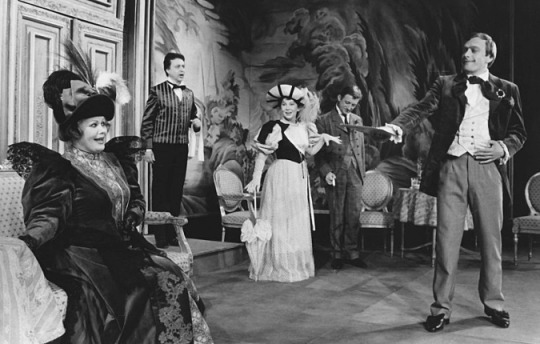
Reżyser Giovanni Pampiglione ustawia aktorów na próbie inscenizacji dramatu Venezia, Venezia Carlo Goldoniego w 1993 r. Foto © Bogdan E. Axmann
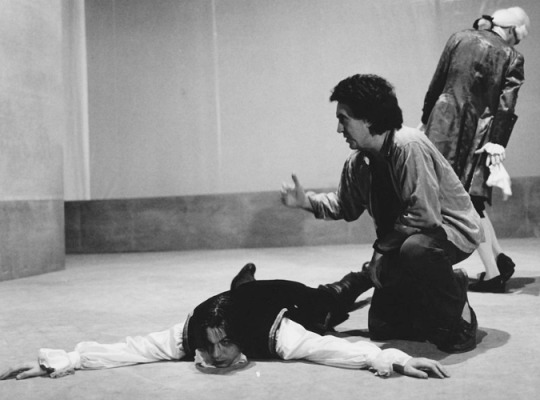
1994, Gwałtu, co się dzieje! Aleksandra Fredry. Foto © Wojciech Plewiński
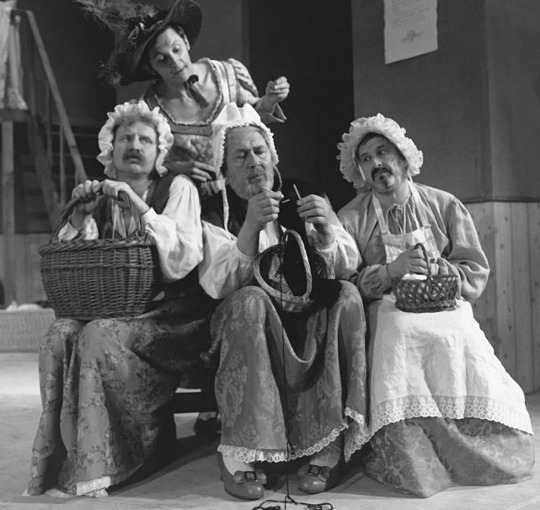
1994, Oleanna Davida Mameta. Foto © Wojciech Plewiński
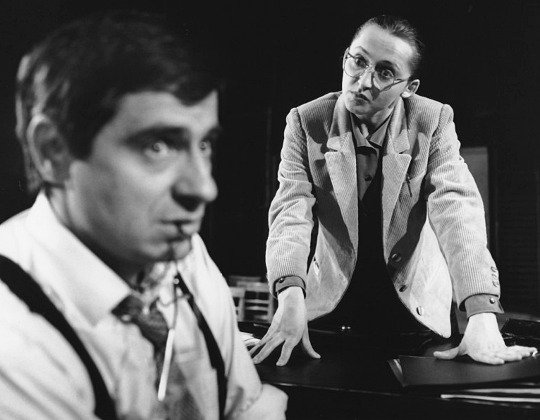
Andrzej Wajda opisuje swoją wizję reżyserską aktorce Beacie Fudalej na próbie przedstawienia według Yukio Mishimy w 1994 r.
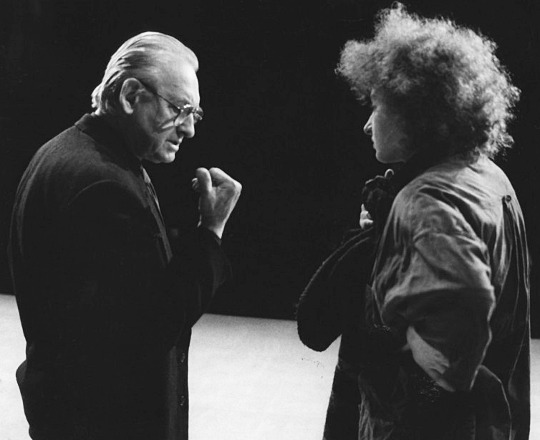
Rysunek Krystiana Lupy - projekt scenografii do inscenizacji Rodzeństwa Thomasa Bernharda w 1996 r.

2000, Spaghetti i miecz Tadeusza Różewicza. Foto © Ryszard Kornecki

2005, Ósmy dzień tygodnia według Marka Hłaski. Foto © Ryszard Kornecki

2007, Oczyszczenie Petra Zelenki jako autora i reżysera. Przedstawienie w Teatrze Kameralnym było światową prapremierą sztuki. Foto © Ryszard Kornecki

2015, minister kultury Piotr Gliński w foyer Teatru Kameralnego na przedstawieniu Płatonowa Antoniego Czechowa. Foto © Anna Kaczmarz

><><><><><><><><><><><><><><><
Kraków, Poland
21 Starowiślna St.
house built in 1887-1888
taken on 28 August 2016
The building's nine-axial facade is one of the widest along this street, yet it still hides its actual size that was expanded during a century and half until it covered the courtyard and reached the opposite house's back, and the final length thrice exceeded the frontage span. The main expansion, designed by Maurycy Tellman, was done a few years before the Great War, for a newly established Novelty Theatre, just two decades after completing the original construction. Here's how a popular Cracovian daily described and illustrated it:
[drawing of the expansion published with the quoted article]
For a long time Kraków was lacking an entertainment venue where a person of mediocre wealth could inexpensively spend a few hours of light-hearted fun. So when last spring directors [Stanisław] Poleński and [Tadeusz] Pilarski had opened a provisional variety theatre, the idea was met with general approval ... . In the face of such success the company got down to building its own place and realised it at almost American-fast pace. ... the construction managers were Mr. Kramarski and Mr. Majer; in two months they raised a huge, mostly iron and concrete, building with a theatre hall, balconies, a gallery, stage, dressing rooms and cafeterias ... . The theater is placed in the garden of a tenement house on Starowiślna St. ... A fireproof dome-shaped roof of Stephan system rises above the building, guaranteeing an excellent acoustics. ... The auditory is so huge it's going to be the largest hall in Kraków. It will fit about 1000 seats. It's made in sapphire hue with golden friezes and wall paintings, and encompassed with boxes and a semi-circle multi-floor balcony, with a small gallery vis-à-vis the stage. There's no standing room, only sitting with use of comfortable, velvet chairs with self-lowering seats. An artistic orchestra pit meant for music separates the audience from the stage, comfortable and before all roomy and high. The stage is surrounded with no less comfortable, numerous dressing rooms for actors. Cafeterias and smoking lounge will be placed in the front house, isolated from the main theatre building. The central heating and electric light and fans have been installed in the theatre building. The lighting will be abundant and made with splendour, as all the lamps will be set up in artistic holders.
Ilustrowany Kuryer Codzienny [Illustrated Daily Courier], 1911, 29 November
The note's style somewhat evokes suspicions that its author spent more time in the cafeteria he mentions than in the main building, assuming he even visited it at all instead of just writing down what one of the directors might have told him, because the actual number of seats was closer to half of said thousand, and other rooms were far from spacey as well. Still, the opening evening was a great success. First to walk out on the new stage were that time stars of operetta and cabaret, including Scottish sisters Gilby and a Polish actress Józefa Borowska. For the latter, the event turned out unlucky:
On the night of Saturday to Sunday thieves broke into the dressing room of the Novelty Theatre and stole a couple of clocks, earrings and necklaces belonging to Mrs. Józefa Borowska, and a dozen of costumes. The total loss amounts to 2600 crowns. The called Police arrested the perpetrators, that is Jan Szumiec, 18, and Stanisław Kania, 19. In recent time, those thieves had comitted a few bold burglaries, among else in two shops on Wielopole Street.
Ilustrowany Kuryer Codzienny [Illustrated Daily Courier], 1911, 19 December
Not even two years passed when the Cracovian press reported that:
The Novelty Theatre has been thoroughly remade into a first rate cinematographic theatre. The management arranged new boxes, spare seats and cheap seats for children. In general, this is going to be the cheapest cinematographe in Kraków, calculated on a large scale.
Nowa Reforma, 1913, 3 April
The theatre came back on Starowiślna Street in 1918, to give place again to the cinema after just four years. Some visited it not just for movies:
Last night unknown perpetrators broke into the cafeteria of the Novelty Cinema and stole a big quantity of chocolate and candies, worth 150 zloty.
Ilustrowany Kuryer Codzienny [Illustrated Daily Courier], 1929, 17 July
Briefly renamed to Światowid in the beginning of the 30s, and then known as Adria Cinema, it had the audience of 1200 seats in its last days. The cinema passed away with the World War II, but the theatre on Starowiślna Street works again, today named the Chamber Theatre, it shares the building with the Contemporary Theatre. A lot was happening on its stage during all those years.
[photos respectively: 1958, Michel de Ghelderode's Pantaglaise; 1960, Henrik Ibsen's Rosmersholm; 1962, Sławomir Mrożek's Postępowiec; 1962, William Shakespeare's Coriolanus; 1963, Albert Camus' Caligula; 1965, Eugene Ionesco's Le Nouveau Locataire and Délire à deux; 1965, Lidia Minticz & Jerzy Skarżyński's scenic design for Stanisław Mrożek's Tango; 1966, Murray Schisgal's Luv; 1967, Euripides' Trōiades; 1968, Peter Shaffer's Black Comedy; 1969, Urszula Gogulska's scenic design for Anton Chekhov's Tri sestry; 1970, Edward Albee's Everything in the Garden; 1975, Anton Chekhov's Vishnyovyi sad; 1977, Bertold Brecht's Die Dreigroschenoper; 1989, Oscar Wilde's The Importance of Being Earnest; 1993, Director Giovanni Pampiglione arranges the actors during a rehearsal of Carlo Goldoni's I due gemelli veneziani; 1994, Aleksander Fredro's Gwałtu, co się dzieje!; 1994, David Mamet's Oleanna; 1994, Andrzej Wajda explains his director's vision to actress Beata Fudalej during a rehearsal for adaptation of Yukio Mishima; 1996, Krystian Lupa's scenic design for Thomas Bernhard's Ritter, Dene, Voss; 2000, Tadeusz Różewicz's Spaghetti i miecz; 2005, Marek Hłasko's Ósmy dzień tygodnia; 2007, Petr Zelenka's Očištĕní (the world premiere); 2015, the Minister of Culture Piotr Gliński in the Chamber Theatre's foyer for Anton Chekhov's Platonov]
#theatre#history of culture#architecture#vintage news#retro#photographers on Tumblr#original photography#Europe#Poland#Polska#Kraków#Krakow#window crowns#window heads#stucco#actors#actresses#theatre directors#scenography#stage plays
10 notes
·
View notes
Text


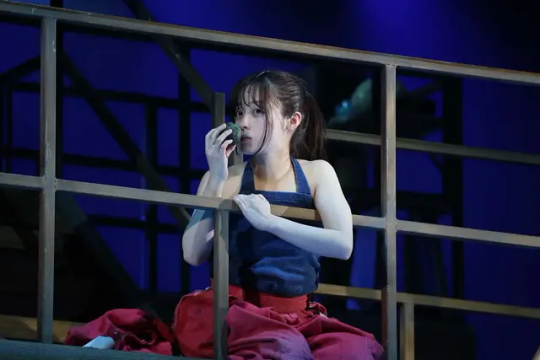

#kanna hashimoto#hashimoto kanna#橋本環奈#jactress#spirited away#anime#stage plays#plays#theater#theatre
5 notes
·
View notes
Text
You kin Tsubomi?
Just say you bottle up your feelings to be liked and base your self worth off of what others think of you
#tsubomi takane#mob psycho 100#mob psycho anime#mob psycho#mp100#one#anime and manga#anime#shounen manga#manga#stage plays#video games#games#japan#shounen jump#shounen#comedy#slice of life#supernatural#kincallouts#kintype#kin tag#kin talk#kin things#kin thoughts#kinnie#kinny#fictionflicker#flicktype#synpath
4 notes
·
View notes